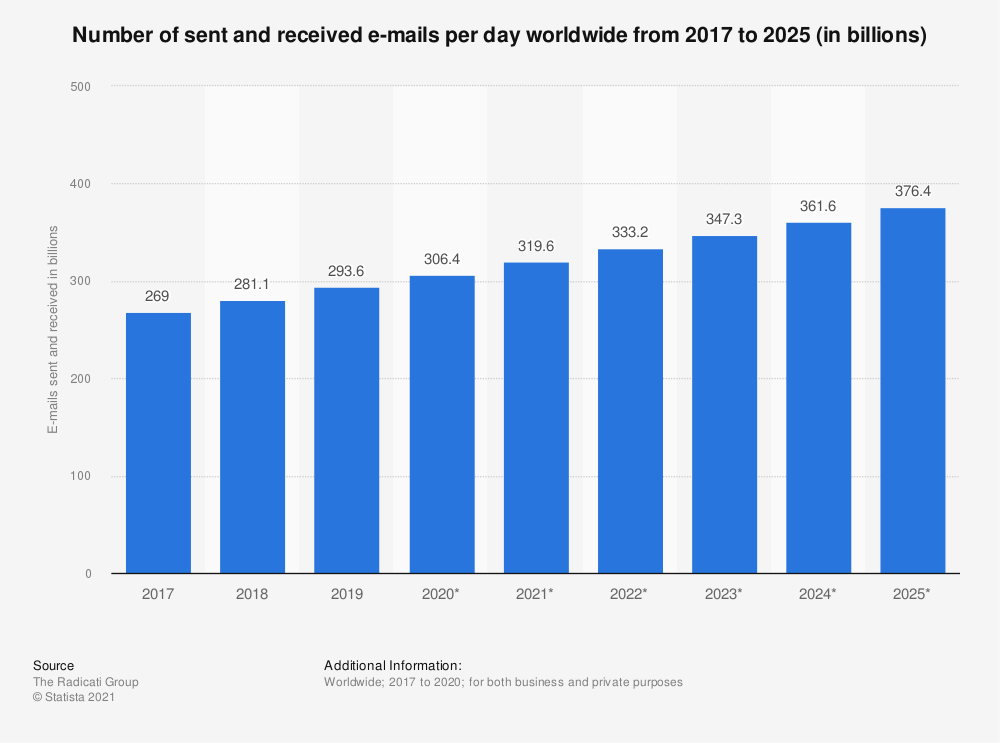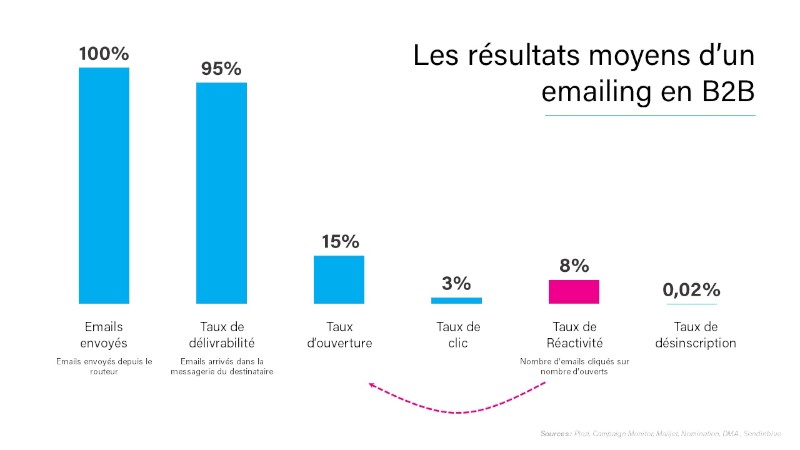For 45% of B2B marketers, the digital channel of choice to communicate remains emailing. Moreover, according to the Hubspot barometer dating from November 2019, 72% of French marketers still choose to invest in emailing.
A successful B2B prospecting operation with lead generation is often the result of a good balance between several factors that marketers or salespeople are not necessarily masters of. However, there are several elements to choose from in order to put the best chances on your side. Among them, the choice of the channel (or channels) to use is based on a subtle mix between cost, message to be transmitted and objectives.
In the majority of companies, marketing and sales arbitrate between the following different channels:
- Emailing : newsletter, prospecting message, information email...
- Cold calling : direct call without any prior interaction with the contact
- Warm calling: call following an interaction with the contact (downloading content, filling out a form, participating in a webinar)
- Social selling: approach through social networks, LinkedIn mainly in B2B
- Webinar : digital sessions
- Event : organization or participation in a trade show, owner event
In B2B, 99% of marketers surveyed by Adelanto-CMIT say they use email as a channel ahead of webinars (94%), search (90%) and social networks (88%).
The emailing market will be slightly down in 2022
However, according to the DMA which represents the main actors of the French emailing, the number of routed emails has slightly decreased in 2021 (-2.63%). This has not prevented the players in the field from experiencing a growth in their turnover.
In terms of volume, this represents 140 billion emails over a year, while in a single day, approximately 319 billion emails are exchanged worldwide.

Disparate emailing ROI
The best indicator to decide the right channel is obviously its ROI (revenue/cost ratio). In B2B, 1 out of 4 professionals declare that email remains the channel that generates the most revenue for their company, even if calculating the ROI is often cited as a real difficulty for marketers.
Beyond the final sale, several intermediate indicators allow to measure the performance of the emailing action. These major KPIs will follow the classic email cycle to measure at each stage of the operation the retention of the contact until the final signature. However, it is still difficult to find coherent statistical references in the field to gauge the results of one's own actions. The figures published by the surveys on the subject cross-reference each other and often qualify different elements (cold mailing versus customer newsletter, post-event emails...).
Opening the email
The open rate measures the proportion of recipients who opened the email out of the total number of recipients. Generally speaking, an average open rate would vary between 15% and 18% according to the main sources.
In B2B, the average opening rate is around 22% according to the Plezi study, which aggregated different sources to establish its figures. However, it is obvious that you cannot expect the same results from a newsletter sent to your own customers as from a cold mailing operation. For the latter, a good result would reach 15%.
Top 3 reasons why (business) recipients open B2B marketing emails
- 50% for information: we are here in correlation with the events of 2020-2021
- 21% to conduct competitive intelligence: to innovate and add value to their services during this period
- 19% to discover new products
Engagement or click?
Here, two main KPIs will measure the interactivity of the recipient with the message, which will allow to understand the interest of the message.
The click-through rate measures the ratio between the number of emails clicked on and the number of messages sent. The problem with this indicator is that it does not take into account whether the recipient opened the email or not; it will therefore lose relevance to evaluate the performance of the message. You should also check which links were clicked: CTA (click to action), unsubscribe, logo...
The reactivity rate makes it possible to straighten out the measurement of the message's relevance since it compares the recipients who clicked with the recipients who opened. The message becomes almost solely the trigger for the action.
The top 3 reasons email recipients interact:
- 66% the name of the sender: we are talking here about notoriety
- 30% of the proposed offers that correspond to their activities
- 14% easy reading of the message (image, clarity...)

Set goals for the email campaign
The sale remains the goal to achieve with lead generation, for any campaign but can happen after several operations. Setting a sales objective for an email is therefore not necessarily the most effective and can be a source of disappointment. It is necessary to set more achievable objectives to your email, which themselves associated with other campaigns with other objectives will target the overall sales objective.
Let's mention some intermediate objectives that can be measured and reached in a single operation: sharing rate, landing on the site, return rate on the site, number of clicks on the logo...
Some statistical elements to help you in setting goals:
- 85% of respondents say they do not share content
- 36% say they "rarely or sometimes" go on the issuer's social networks, and 62% say they never go.
- 41% of respondents say they "rarely or sometimes" respond to email directly, compared to 59% who say they "never" respond to email.
- 66% of respondents say they do not contact by phone after sending the email
- 56% declare to fill in a contact form
- 83% "rarely or sometimes" visit the site
Ellisphere's experts are the preferred contacts for companies' sales, marketing and IT teams in order to address their B2B data management and exploitation issues. TheDatalists by Ellisphere offer solutions for the entire data chain to help their clients in their lead generation, qualification of their databases and the management of their marketing and sales actions.


